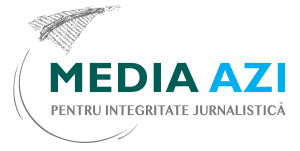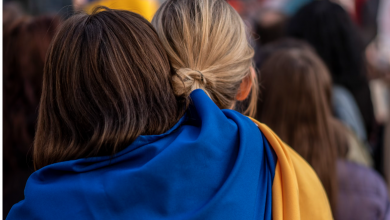Journalistic Sources and Recommendations for a Correct Approach to the Topics Concerning Migration and Refugees

In the context of the war in the neighbouring country, as well as the one in the Middle East, the immigration and refugee crises, both the internal ones and the external ones, show no signs of ending soon, and they still remain the sources of topics for journalists. According to the World Migration Report 2018, media outlets play an important part in shaping political discourses which affect the way people think and act, decision-makers prioritize their agendas, and migrants make their decisions.
As a complex and diverse subject which has a major impact, the refugee crisis demands not only professional skills but also a human attitude from the journalists. Media Azi has compiled the suggestions on essential standards for covering refugee-related issues from a number of relevant sources.
The Charter of Rome, for instance, provides a set of recommendations regarding the way the media is supposed to cover the issues related to asylum seekers, refugees, victims of trafficking, and migrants. The document mainly focuses on journalists’ comprehending and selecting an appropriate terminology which complies with the national and international legislation. Among other things, the Charter requires journalists to:
- avoid spreading inaccurate, simplified or distorted information as regards asylum seekers, refugees, victims of trafficking and migrants;
- ensure their anonymity for the reason that that those who are identifiable, as well as their relatives, may face reprisals on the part of the authorities in their country of origin, of non-state entities or of criminal organizations. Moreover, individuals who belong to a different socio-cultural context, where the press plays a limited role, may not be aware of and foresee all the consequences of their decision to appear in the media;
- consult experts and organizations with a specific expertise on the subject so as to provide the public with information which is clear, comprehensive and also analyses the underlying roots of phenomena.
To improve the quality of reporting on migrants and migration on the basis of human rights, the International Organization for Migration (IOM) provides the following suggestions.
- To avoid confusion related to terms, journalists can consult the IOM’s Glossary on Migration or seek capacity-building opportunities and online workshops to understand migration.
- The IOM also recommends respecting the dignity of migrants by avoiding the use of dehumanizing language and metaphors that cast migration as a form of a natural disaster (often a flood), or migrants as animals, especially insects (“swarms”).
- The media should challenge hate speech and implicitly connect with migrants, as it is important to include the voice of migrants and reflect the human aspect of this phenomenon.
- Journalists are recommended to avoid victimization and over-simplification of the stories covered. In most cases, migrants are perceived either as a problem or as victims. The IOM suggests promoting positive aspects of migration, such as stories of successful artists who emigrated, remittances sent by the diaspora, and the contribution of migrants to development in the country they arrived in.
- It is desirable for the media to place the migration story in a global context, because local or national interests may predominate at the expense of a wider understanding of the migration and the reasons for it.
- Promoting evidence-based public discourse by means of using accurate information and resources is essential. Journalists have to be transparent, to share resources to further explore the topic under discussion with the public, to confront, fact-check, and analyse statements to hold authorities accountable, to educate the public, and contribute to a deeper understanding of migration.
Media professionals and journalists play an important part in shaping perceptions, according to the institutions specialized in the sphere of migration. By following these recommendations and countering negative attitudes and behaviour towards migrants, the media sphere can make a significant contribution to raising awareness of risks or situations of human rights violations faced by migrants.
The Council of Europe, in Media Coverage of the “Refugee Crisis”: a Cross-European Perspective, emphasizes the part played by the media in providing a platform for revealing, discussing, and presenting these complex challenges to the public as central. The document contains the Council’s strategy for supporting the media sphere at the European level in order to cover the issues related to refugees correctly. Among the tactics beneficial for covering such topics, we would like to highlight the following expectations from the media outlets:
– not to limit themselves to simple geopolitical frameworks of risks and apprehension, preferring an inclusive, positive language of common challenges and objectives;
– to examine the crises in the refugees’ countries of origin to have a clear concept of the reasons for their departure, and to try to learn more about the way they traveled to the country where they found refuge;
- to make refugees participants in telling their stories instead of mere objects of the narrative; likewise, involving refugee journalists in creating materials on such topics is recommended.
***
The other sources of useful information on migration, refugees, and their rights are suggested by the International Journalists Network (IJNet). This list includes:
– Reporting on Migration and Minorities: Approach and Guidelines, edited by the Respect Words Project;
– 8 Tips for Migration Coverage, published by the European Federation of Journalists;
– Media and Trafficking in Human Beings Guidelines, developed by the Ethical Journalism Network;
– Media Coverage on Migration: Promoting a Balanced Reporting, created by the IOM;
– Covering Immigrants & Immigration: Tips from Experts, by the Dart Center for Journalism and Trauma.




